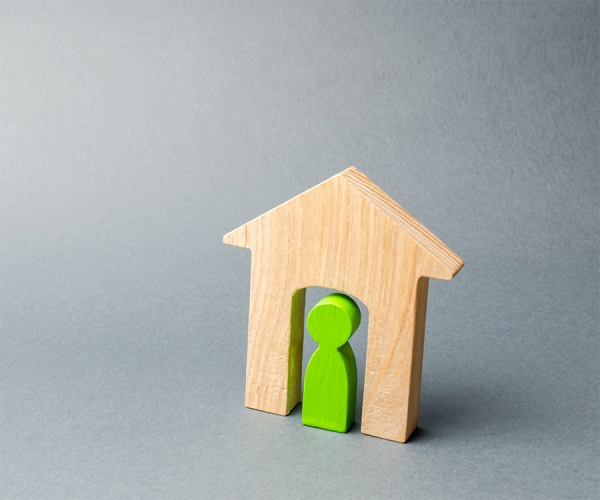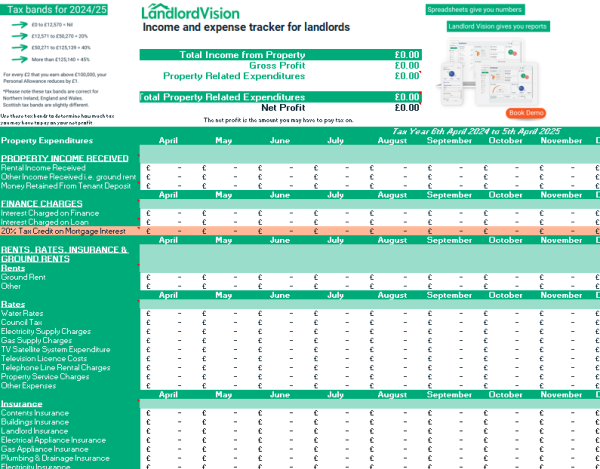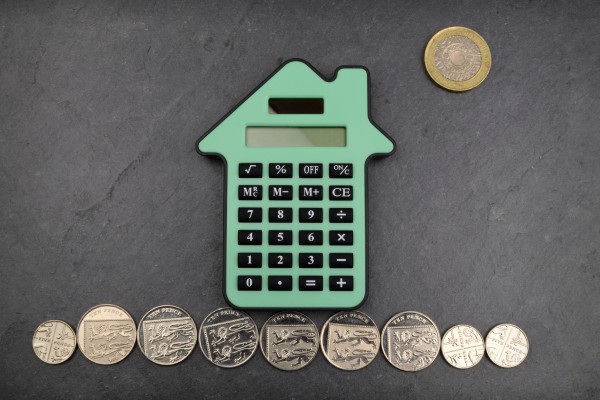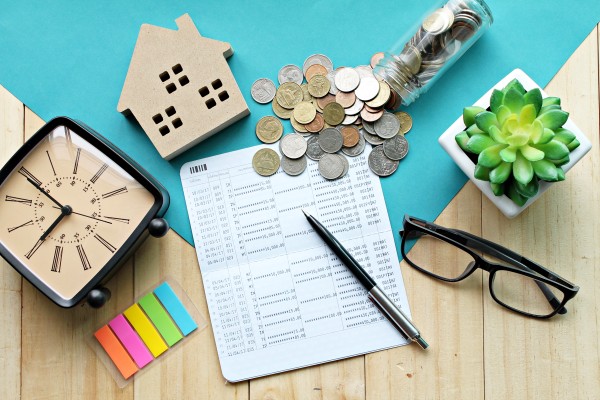
A buy to let investment property is not a guaranteed investment. Various government policies, combined with rising house prices, have made it increasingly hard to make a profit in the private rental sector. But all is not lost.
By following the tips below, you can make your properties more attractive to tenants, reduce your expenditure and find other ways to make your investment work harder for you.
1. Buy a cheap property in a high-demand area
The right property is the difference between success and failure. It’s common to view properties in your neighbourhood when you are looking for the perfect investment property, but there is more to it than that. The top areas for buy to let in the UK are a winning combination of high demand and cheap property prices.
University towns and cities are always popular, as there is a steady supply of tenants, but according to research carried out by Zoopla, Rochdale, Glasgow, and Wigan are the top three locations for investment landlords, with rental yields of 9%, 8.6%, and 8% respectively. Bottom of the league was St Albans with a paltry 3.65%.
This illustrates just how important it is to do your research before you invest in a buy to let property. Yes, it is easier to invest in buy to let properties in your area, but consider investing in a different part of the country if rental yields are significantly better.
2. Rent to the right tenant
Once you have found the right property, your next task is to find the perfect tenant. Think carefully about what type of tenant would suit your property. You won’t be looking to let to students if your property is miles from a university for instance.
The property and your tenant need to be a good fit. Spend a bit of time assessing the pros and cons of different tenant types for your target area. This is time well spent.

3. Screen tenants very carefully
Tenant screening is vital. This helps you to find suitable tenants and to ensure that you are not letting your property to tenants who can’t afford it, this doesn’t help you or them.
Use a professional tenant screening service if you manage your own rentals. And if you use a letting agent to find tenants, make sure you use a reputable agent with a track record of finding suitable tenants.
4. Conduct group viewings
When something appears to be in demand, we automatically want it more. Even if that item is not really worth having. It’s known as the paradox of scarcity. Black Friday is a good example of this type of behaviour. If you have ever watched with amazement as people fight over cheap TVs in the electrical aisle, you’ll understand what we are saying here.
Frame something in the right way and people will want it all the more. This is why flash sales are so effective – and also why double-glazing salesmen will try to convince you that their prices are a strictly time-limited offer, guaranteed to expire in 60 minutes unless you sign on the dotted line.
Group viewings are part of this phenomenon. We see other people viewing a property and it triggers a primal competitive instinct. If the other viewers seem super interested, it must be worth having!
You are more likely to find a tenant if you arrange group viewings. Plus, it is easier from a logistical perspective if you are the one conducting the viewings. Have an open house for a few hours on a Saturday or Sunday. Advertise it on social media and encourage people to share the post with anyone who might be interested in renting your property.
5. Look for a low-maintenance property
It stands to reason that a low maintenance property is a safer bet. The more money you spend on repairs and upgrades, the lower your profit margins. Older properties tend to require more maintenance, but new builds are not always constructed to a high standard. Use your common sense here. If there is evidence of rising damp and the roof has more holes in it than a slab of Swiss cheese, walk away.
6. Raise the rent
Raising the rent is a no-brainer way to boost your rental yields. Always monitor local rents to make sure you are pricing your properties competitively, but don’t raise the rent too much or you risk having a long void period between tenancies. Be wary of putting up the rent if you have an existing tenant. There are rules around when you can increase rent based on your tenancy agreement. You should never increase the rent arbitrarily and increases should be reasonable. If you plan to increase the rent on an existing tenancy, work with your tenant to ensure any increase is reasonable and won’t put them in a difficult financial position.
7. Shop around for a mortgage deal
We are all guilty of apathy when it comes to mortgages and other financial products. Searching for new deals and going through the hassle of applying to another lender takes time and effort, right? Yes, it does, but that’s always time well spent.
Do a bit of legwork; you could save a packet on your mortgage repayments. Once your fixed rate or discounted deal comes to an end, your lender will probably put you on a variable rate. Why pay more than you need to?
Put a reminder in your diary three months before your deal comes to an end. Search for a better deal or talk to a mortgage broker. You know it makes sense.
8. Keep accurate financial records
Tracking income and expenditure isn’t exactly thrilling, but it’s a necessary evil. For one thing, HMRC requirements state landlords must keep accurate financial records for up to seven years. And for another, it’s sensible from a financial perspective.
It is very difficult to tally up tax-deductible expenses at year-end if you didn’t record them. Each expense that slips through the net is money down the drain, which chips away at your rental yields.
Use accounts software with an app, so you can scan receipts on-the-go and track everything in real-time. Alternatively, invest in landlord software like Landlord Vision that combines accounts with management capability. It’s the smart way to run your business.

9. Investigate all possible tax reliefs available
We all have to pay taxes, preferably on time, as our tax money helps to fund the NHS, schools, and other public institutions, among other things. Unfortunately, tax is not a sexy subject, unless you happen to be Chancellor of the Exchequer. Because of this, some landlords don’t pay too much attention to tax and how it affects them, aside from dutifully sending off their self-assessment tax return at the end of the year.
But this is a mistake! There are tax reliefs available to landlords, such as the ‘wear and tear’ allowance and annual investment allowance. Not claiming these and any others you are entitled to is silly.
If you have no clue about tax relief and would rather stick pins in your eyes than read a tax book, speak to an experienced tax accountant and let them sort it out for you.

10. Cut expenditure
OK, so this is another no-brainer, but an awful lot of landlords spend more than they need to.
Sit down and examine your annual property expenditure. Aside from the big stuff, like mortgage payments, what else are you spending money on? Are there any areas where you can save money? You could try to negotiate a better deal with your letting agent or do your own painting and decorating, rather than pay a painter and decorator.
This is another of those tips that is easier to implement if you’re tracking your income and expenditure.
11. Switch to the HMO model
HMO management is not for the faint-hearted, but it is often more profitable if you can handle the extra admin. Instead of letting a four-bed house to one family, you turn one reception room into a bedroom and rent it out to five couples or singles. This generates more income.
Of course, HMOs require more management, and in many areas, you will need an HMO licence, but it is worth looking into.
Things to consider include finding a suitable property, what type of tenant you want to let to (students etc.), whether you want to be a hands-on manager or pay someone else to manage the property, and the extra regulation associated with HMOs.
In addition, consider whether your area is already saturated with HMOs – this may be the case in a busy university city or seaside town
12. Let furnished properties
Furnished properties attract more rent because they offer an all-inclusive option for tenants who haven’t yet amassed their own furniture.
Since rental properties are subject to more wear and tear, you should look to avoid cheap furniture. New mattresses are recommended each time a tenant vacates, but aside from that if you invest in more solid furniture it won’t need to be replaced as often.
13. Add an extra bedroom
Look for properties that offer the option for a further bedroom. For example, many older properties have larger rooms that can easily be sub-divided to make two bedrooms. It isn’t a huge job to build a partition wall, although it’s a good idea to check with your local planning authority before you make any structural changes. Consider the merits of an attic conversion, too. Even turning a second reception room into a bedroom is an option.
Creating more rooms and bedrooms will allow you to charge a higher rent.
14. New kitchen
Upgrading the kitchen is one of the best ways to add value to a property. It’s also a good way to make a property more attractive to tenants. Most people want a nice kitchen in their home. It doesn’t need to be hand-crafted from solid oak, but it does need to have ample storage, be modern and clean.
Consider upgrading your kitchen if it’s looking a bit worn around the edges. If you can do a lot of the work yourself, it will cut the costs significantly. Relatively cheap flat-pack kitchens are available from all good DIY stores. Add a decent sink and taps, plus a neutral worktop and tiles. It’s best to keep it plain and simple, to appeal to the maximum number of prospective tenants.
One additional point worth making is that it is a good idea to rewire a kitchen prior to the install. If it isn’t already, you can then put the kitchen on a separate ring circuit, so if an appliance blows a fuse, it won’t knock the whole house out.
15. New bathroom
Bathrooms are also worth upgrading if yours is firmly stuck in the 1970s. Most tenants want a nice, modern, clean bathroom, so it’s a useful selling point.
Throw out the hideous avocado suite and upgrade to a nice white suite. Ideally, add a separate shower if there is enough space; if not, a shower over the bath is sufficient, but make sure if you include a glass shower screen, it’s well fitted and watertight.
16. Use contract cleaners at the end of a tenancy
Cleaning is a major issue for landlords. A dirty property is unlikely to appeal to prospective tenants. Therefore, it is worth hiring contract cleaners to come in and do a thorough job before re-advertising the place. They will spruce up the property in half the time it takes, which is money well spent.
17. Energy efficiency measures
Energy efficiency is a hot topic these days. Tenants don’t want to rent a property with more air gaps than a colander and they sure don’t want to spend most of their take-home pay on gas and electric over the winter.
The government’s Green Deal is no longer available, but installing energy-efficient double-glazing, uPVC doors, and adding more than the minimum loft insulation will make a difference to a property’s energy efficiency rating, which makes it easier to charge a higher rent.
18. Replace carpets
Old, worn carpets make it harder to find a tenant and achieve full market rent. Fit neutral beige carpets or hard-wearing laminate instead. Your tenants will thank you.
19. Decorate in neutral colours
Neutral should extend to the décor, too. Buy a load of magnolia paint and decorate every room in the same neutral style. A tastefully decorated property is easier to let, and as every landlord knows, fewer voids mean higher rental yields.
20. Low maintenance gardens
Gardens can be problematic as there are often disputes regarding who is responsible for keeping them in a good condition.
No landlord wants their garden to slip into David Attenborough wilderness territory, although the local wildlife may appreciate that. But it isn’t a good idea to concrete it over in the interests of low maintenance either.
Your best bet is to create an attractive but low maintenance garden where tenants can entertain in the summer and let their children and pets play and exercise where applicable.
Get rid of the lawn and replace it with paving stones or gravel. Use weed control membrane to keep weeds to a minimum. If you want to introduce some greenery, build a few planters and add some low-maintenance perennials. Tenants are then free to add their own pots and hanging baskets.
21. Add patios and decking areas
Following on from the previous point, building a patio or decking area is an excellent idea. An outdoor seating and entertaining area is a great selling point.
Plenty of people look for an outside entertaining area, in the hope of a hot summer with plenty of opportunities to burn some burgers on the BBQ. It’s especially popular with families.
22. Add white goods
It is customary to provide an oven and hob, but why not go the extra mile and provide a fridge-freezer, washing machine, dishwasher, and tumble drier?
These kinds of white goods can represent a significant expense for tenants, especially if they’re just moving into a property and have had to find a deposit and pay moving fees.
You can attract a wider field of prospective tenants if you include white goods. Pay for an extended warranty on appliances and you needn’t worry about expensive repairs.
23. Install blinds
Curtains and blinds are another extra that tenants might not be able to afford to buy, yet they need them, especially in bedrooms.
Make your property more attractive by fitting neutral blinds in bedrooms and living rooms. Curtains don’t suit everyone, but blinds go with most types of décor. Wood-effect Venetian blinds are readily available from home furnishing stores like Dunelm or even Argos, so you don’t need to spend a fortune.
24. Boost security
Depending on where your property is located, security might be an issue. A small CCTV camera, strong locks, and a secure perimeter fence and gate are advisable.
Modern CCTV cameras are relatively inexpensive and can be linked to a smartphone app. Remember, extra security will give your tenants peace of mind. Make sure to consult legislation surrounding CCTV as you don’t want to encroach on your tenant’s right to quiet enjoyment. You may need to get their permission to operate CCTV and will likely need to pay mind to how you handle any recorded footage.
25. Replace exterior doors
Old wooden exterior doors often look shabby and are not all that secure. In addition, come winter, the wood swells up and the door is difficult to close.
A modern composite door looks attractive and is more secure. They shut easily and are better quality doors are well insulated against heat and cold temperatures. This is definitely money well spent if it makes your property more secure.
26. Install fitted wardrobes and cupboards
Storage is often an issue, as modern homes tend to lack much in the way of storage. Not all tenants can afford to buy a wardrobe either. In addition, moving wardrobes out when the time comes to vacate a property is a huge headache.
Make life easier for tenants by installing fitted wardrobes. A simple sliding door system isn’t that expensive to install if you have a good joiner on speed dial.
27. Keep on top of maintenance issues
As a landlord, you must keep on top of repairs and maintenance. The Homes (Fit for Human Habitation) Act decrees that rental homes ‘…are safe, healthy and free from things that could cause serious harm.’
Not only are you liable if you fail to keep on top of maintenance issues, but it makes it much harder to ask a fair market rent if there are a number of maintenance issues with your property.
Have a good tradesperson in your contacts list and ask your tenants to let you know when things need fixing.
28. Accept pets

Pets can be a divisive issue for some landlords. There is a general perception that pets represent a higher risk. Cats and dogs can be immensely destructive if left home alone or allowed to run riot.
The problem with banning pets is that you eliminate a large group of potential tenants. Plenty of people have pets. Owning a pet is good for our mental health, especially for anyone who suffers with loneliness. If you refuse to allow pets, prospective tenants will either look elsewhere for a more understanding landlord.
Rather than implementing a blanket ban on all pets except for goldfish, write a clause into the tenancy agreement to say all pet-related damage must be paid for by the tenant. It makes it easier to find a tenant and thus minimises void periods.
29. Consider offering inclusive services such as SKY, Cable, and Broadband
Some tenants find it very hard to manage their finances. Make life easier for them by offering an inclusive rental package with rent and extras such as broadband all rolled into one convenient sum. You can even tack on a bit extra to cover the costs of admin. Not only will you be in pocket, but your tenants will then have an easier job managing their outgoings since one lump sum comes out at the same time each month rather than several.
30. Boost kerb appeal
Don’t underestimate the power of kerb appeal. When marketing a rental property, it pays to go the extra mile by boosting kerb appeal to attract anyone driving by or living in the neighbourhood. Simple things like a tidy garden, clean windows, hanging baskets, etc., all make a difference. When a property looks cared for, it’s automatically more attractive.
Think about it: would you want to live in a house when a shabby front garden, broken blinds in the window, and rubbish piling up in the porch?
31. Ditch the letting agent and manage your own properties
Letting agents are a significant annual cost. Most charge between 8% and 20%, depending on the area. This is money that comes out of your pocket.
Most landlords use letting agents to manage their properties because they lack the time and/or the confidence to do the job themselves. If time is an issue, then it’s probably sensible to stick with a letting agent. And if this is your first buy to let property, it’s understandable that you might want to hand over the job to an experienced professional, but think about it: are you absolutely certain you can’t manage your own properties?
Why not give it a go? Even if you reduce the level of service you pay for, for example, using an agent to find a tenant and set up the tenancy, but then managing thereafter, it will save you money.
There is a lot of support out there for landlords, so you won’t be left to sink or swim if you take over from a letting agent.
Go on, you know you can do it!

32. Look after long-term tenants
Long-term tenants who look after your property and pay the rent on time each month are worth hanging on to.
Take care of your tenants. Be courteous and responsive to issues and offer to upgrade kitchens and bathrooms in a timely manner if required. And don’t be in a huge rush to put the rent up each year. Sometimes it is smarter to keep the status quo rather than being greedy and chasing a short-term profit. After all, your rental yields won’t benefit much if your lovely long-term tenant decides they can’t afford to stay any longer and hands in their notice.
33. Be a nice landlord
Our last tip is a simple one: be a nice landlord!
Whether you are conducting viewings or dealing with a long-term tenant, be nice at all times. You don’t need to splash out on expensive hampers at Christmas or pop over with a bottle of wine when it’s your tenant’s birthday but it costs nothing to be nice.
As you can see, boosting rental yields isn’t just a case of cutting expenditure and hiking the rent. It’s a multi-faceted approach that involves treating your tenants well and making your property more attractive. If you tick all these boxes, you should have no problem minimising rental voids and maximising rental income.



